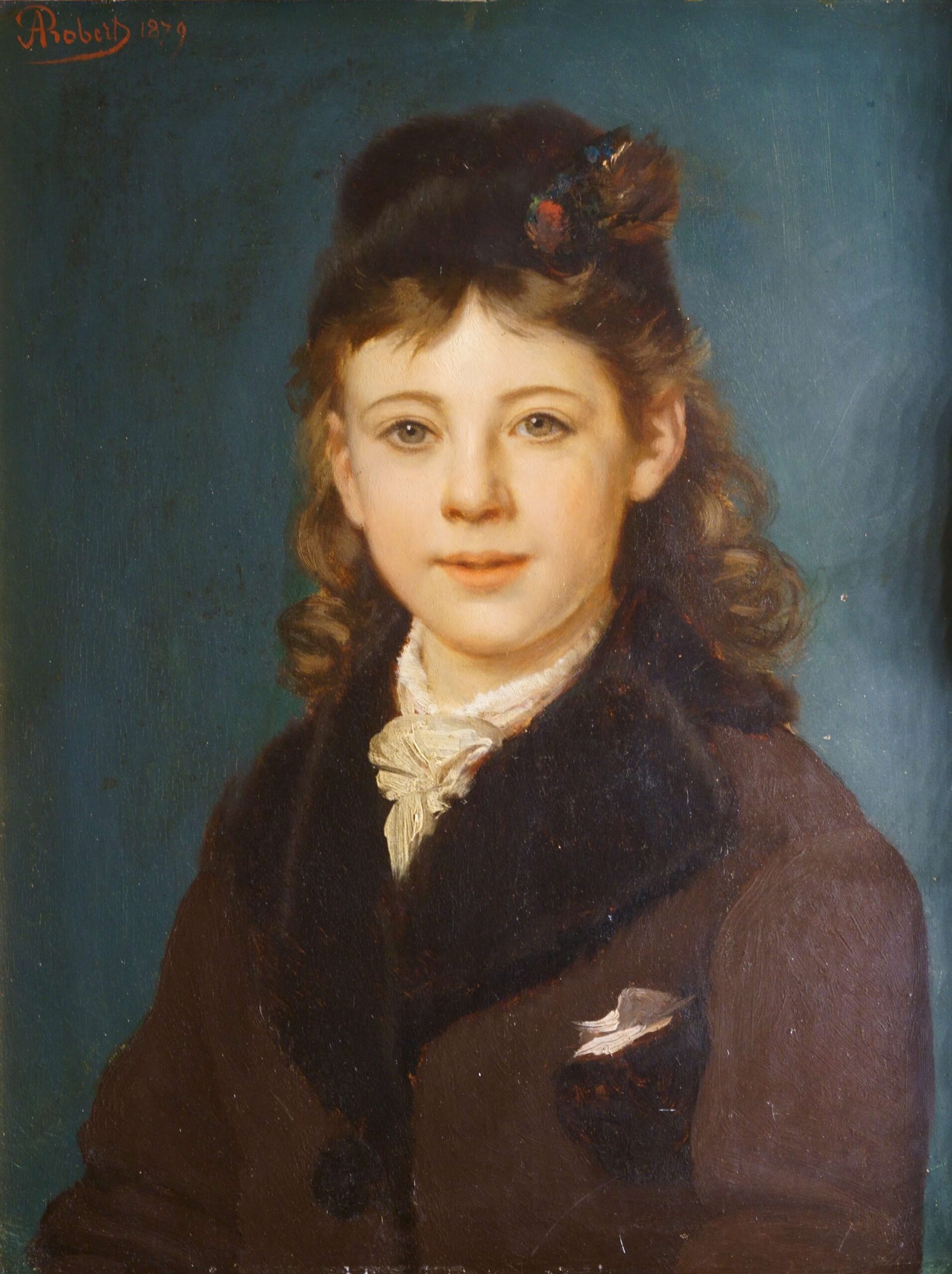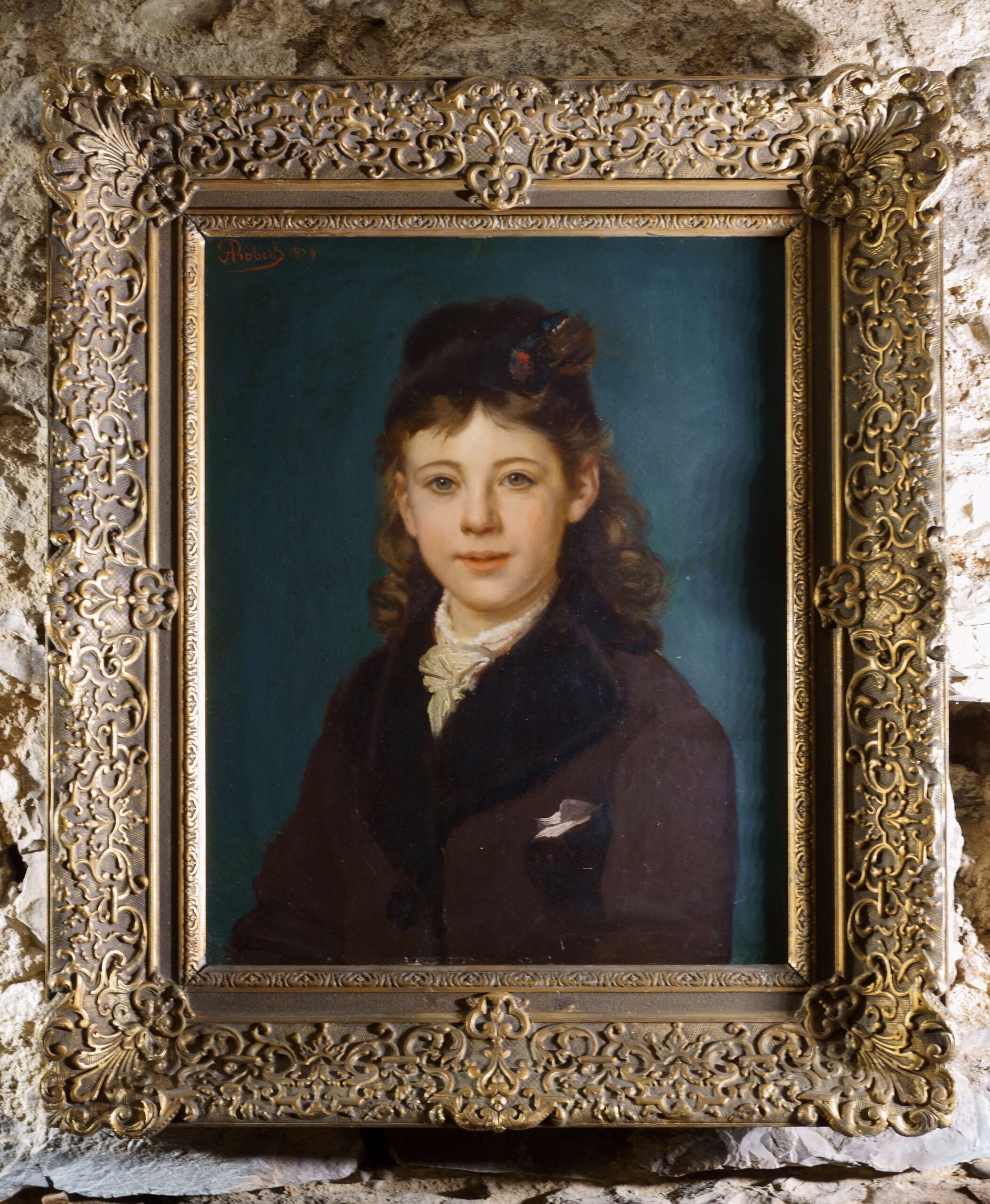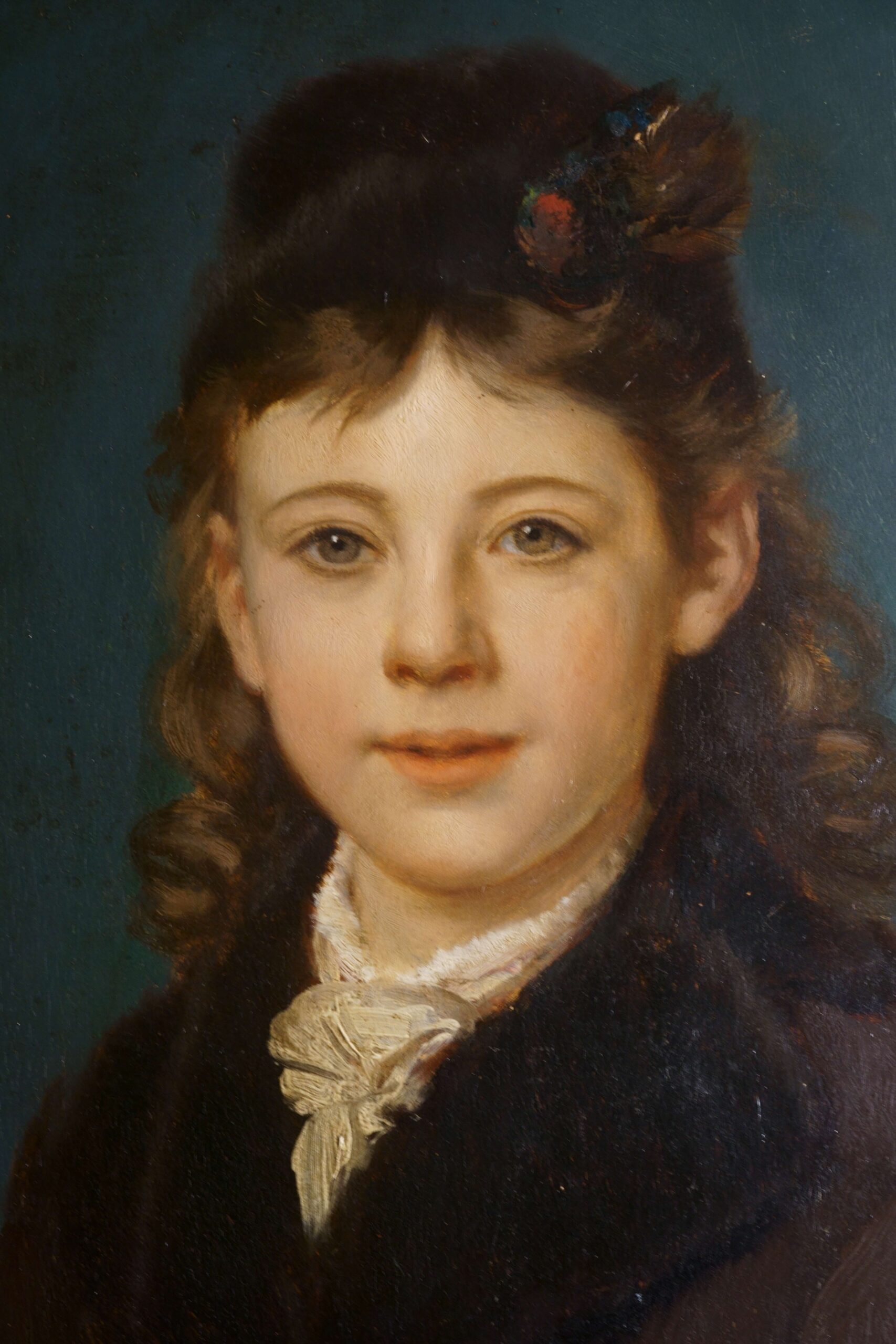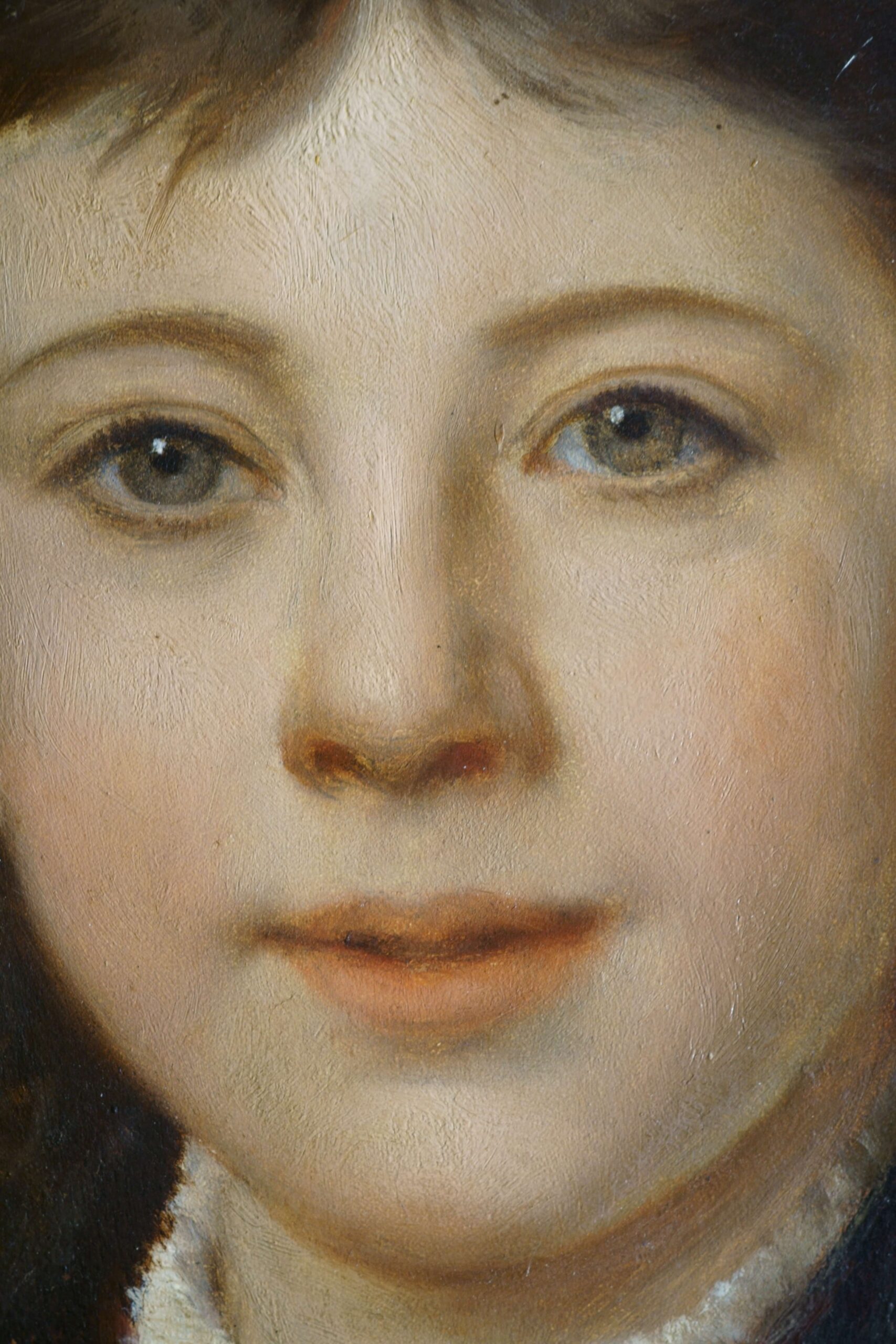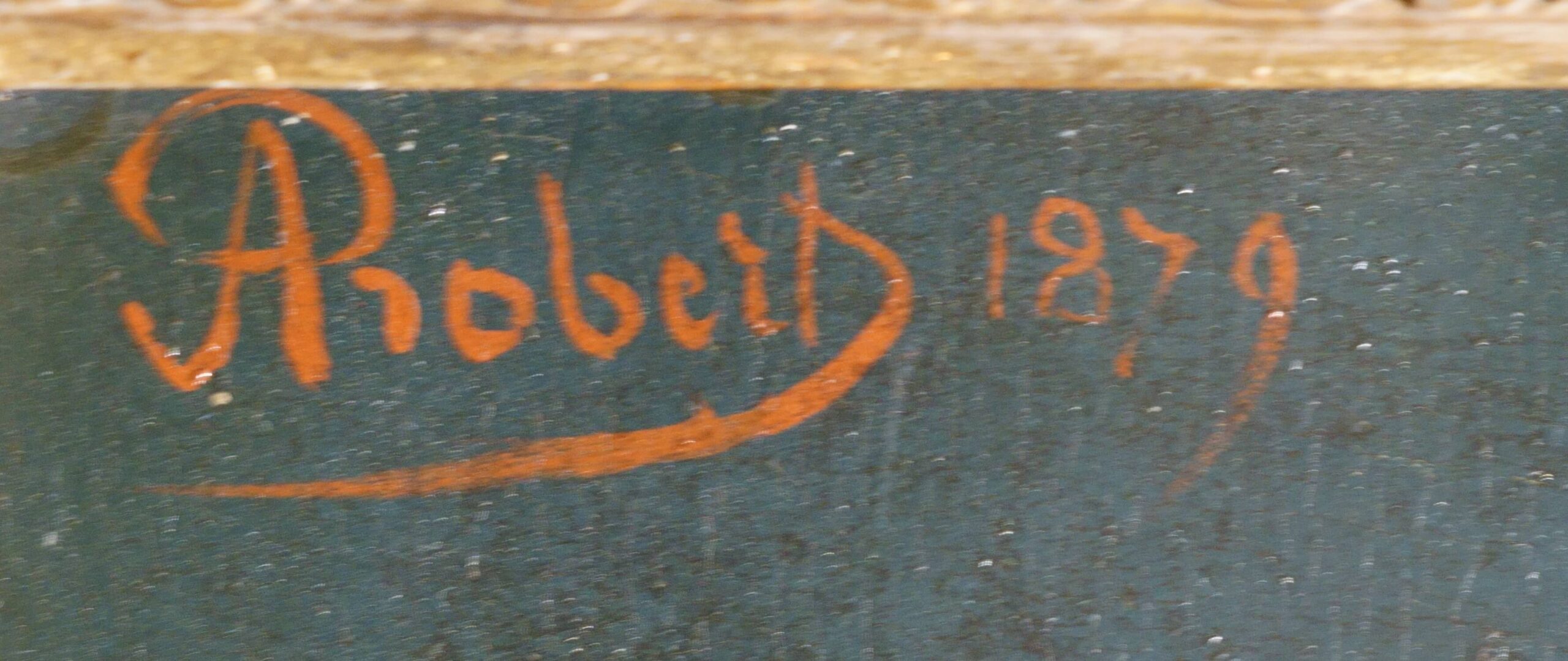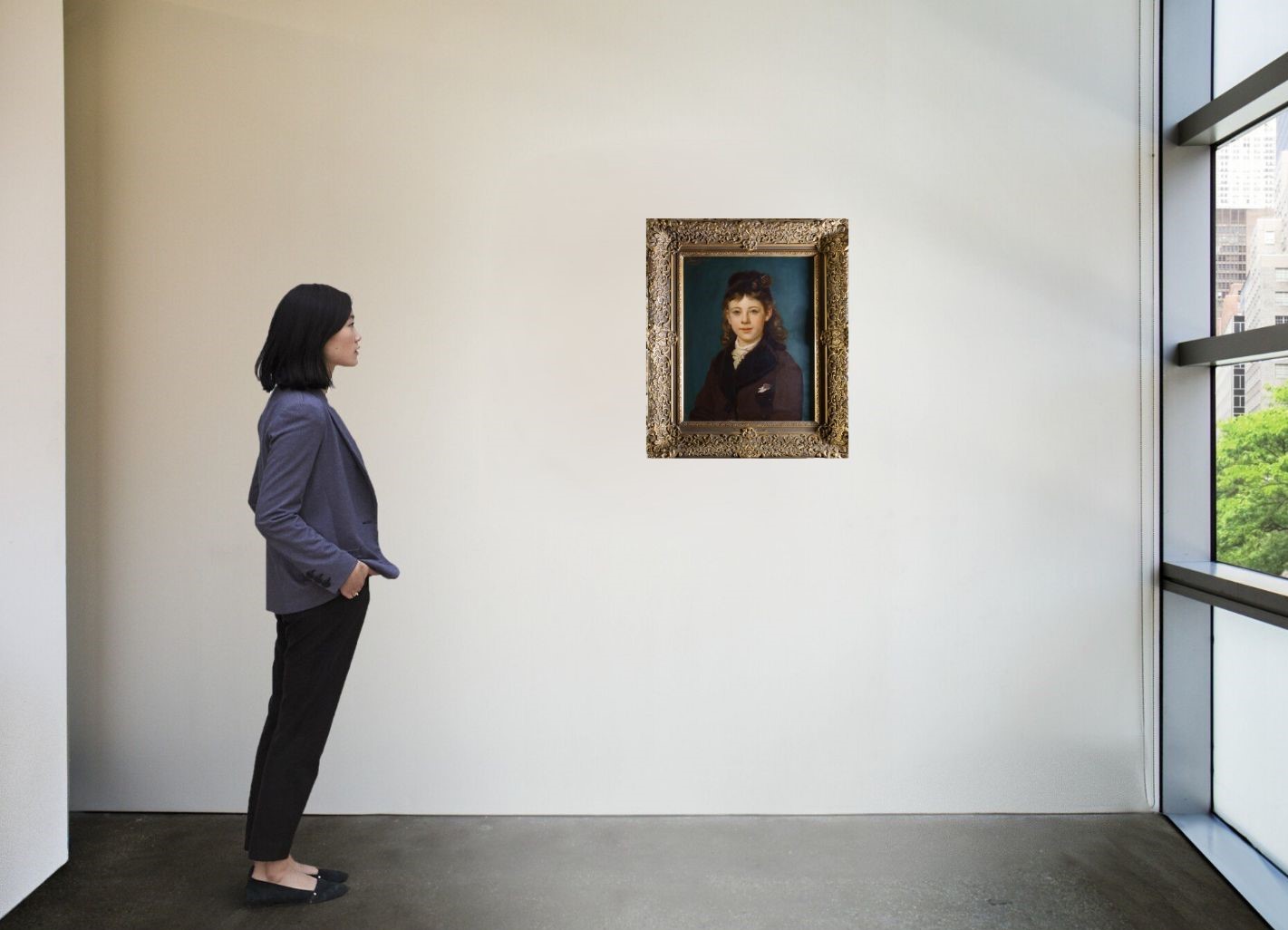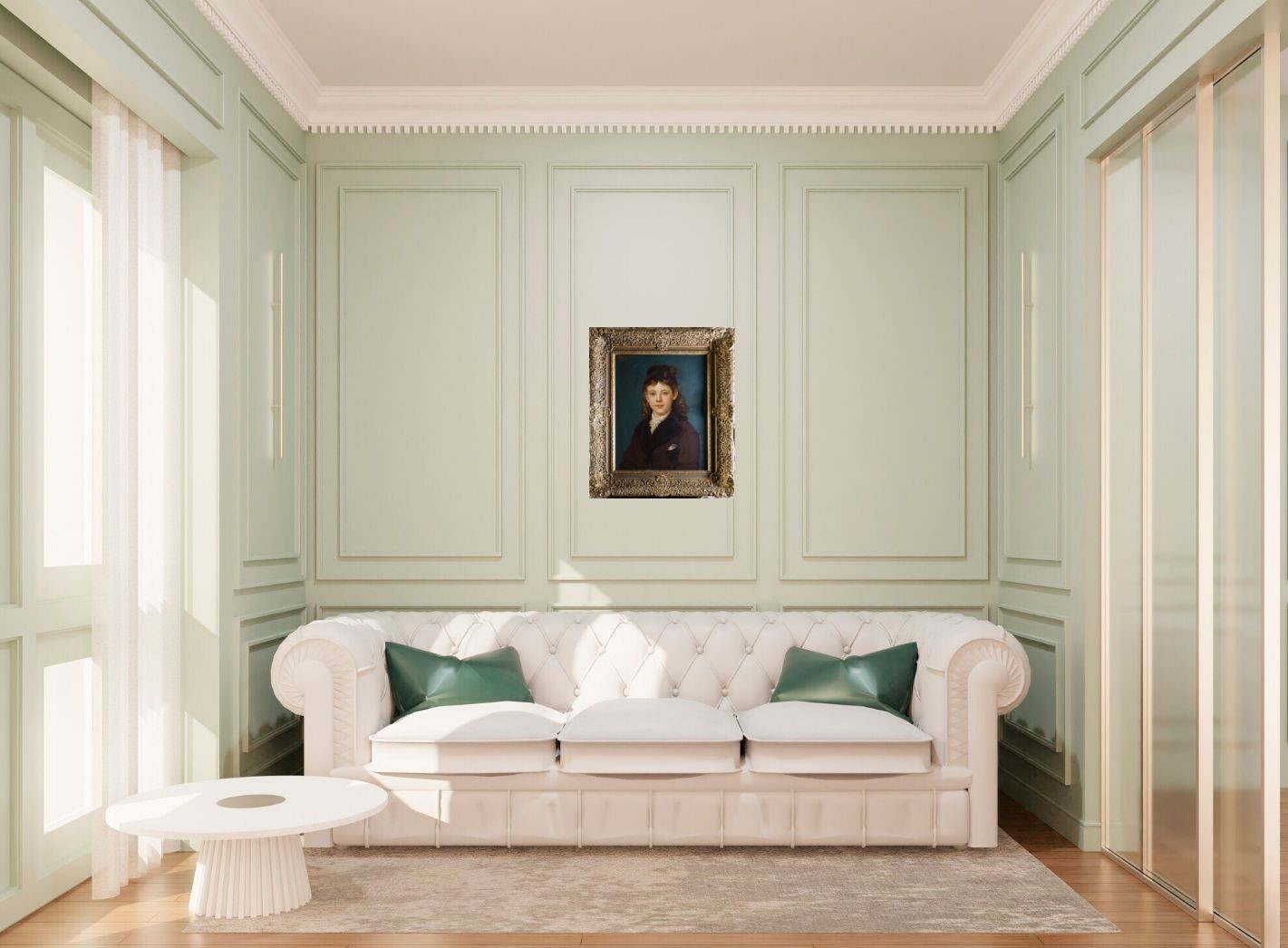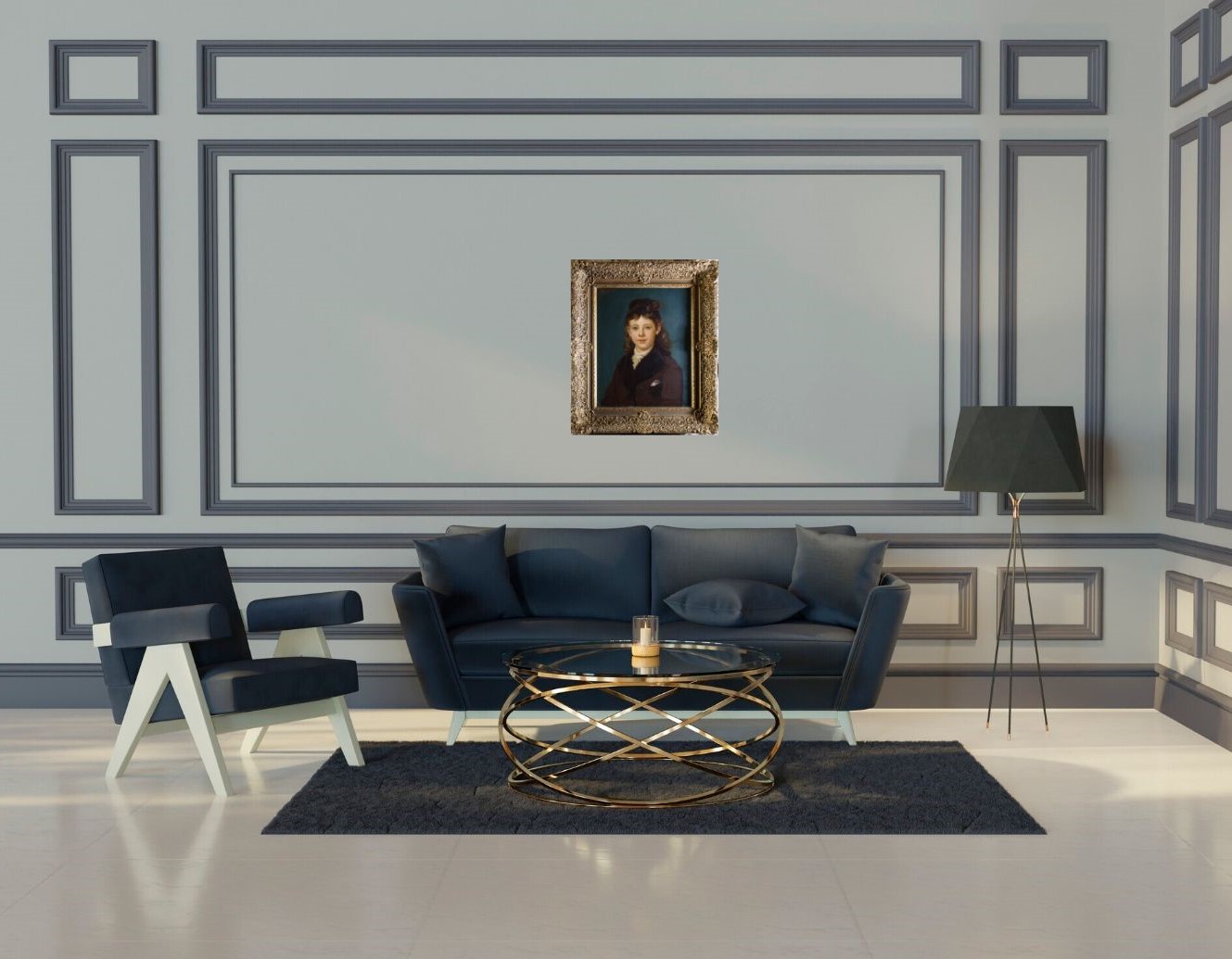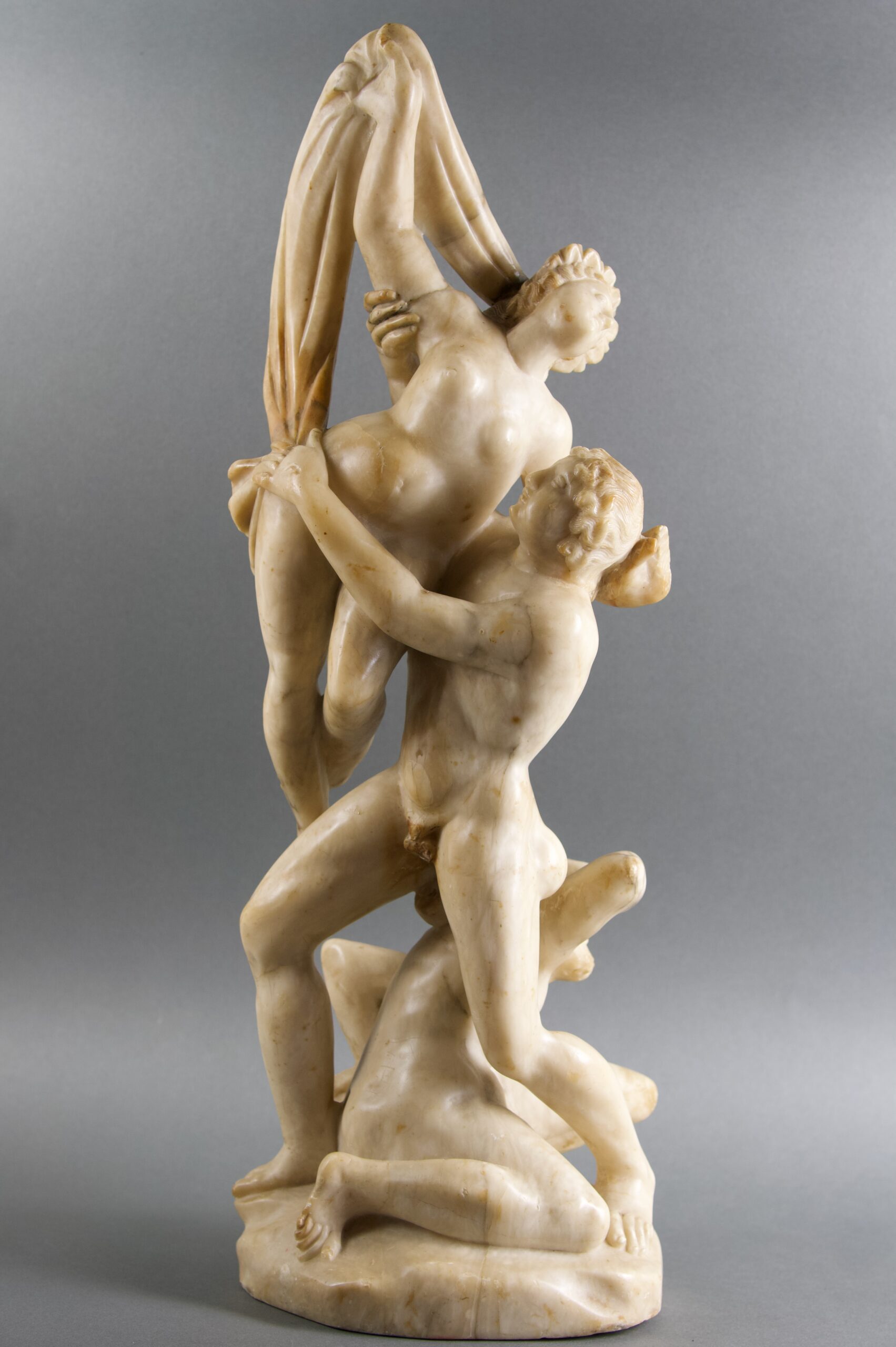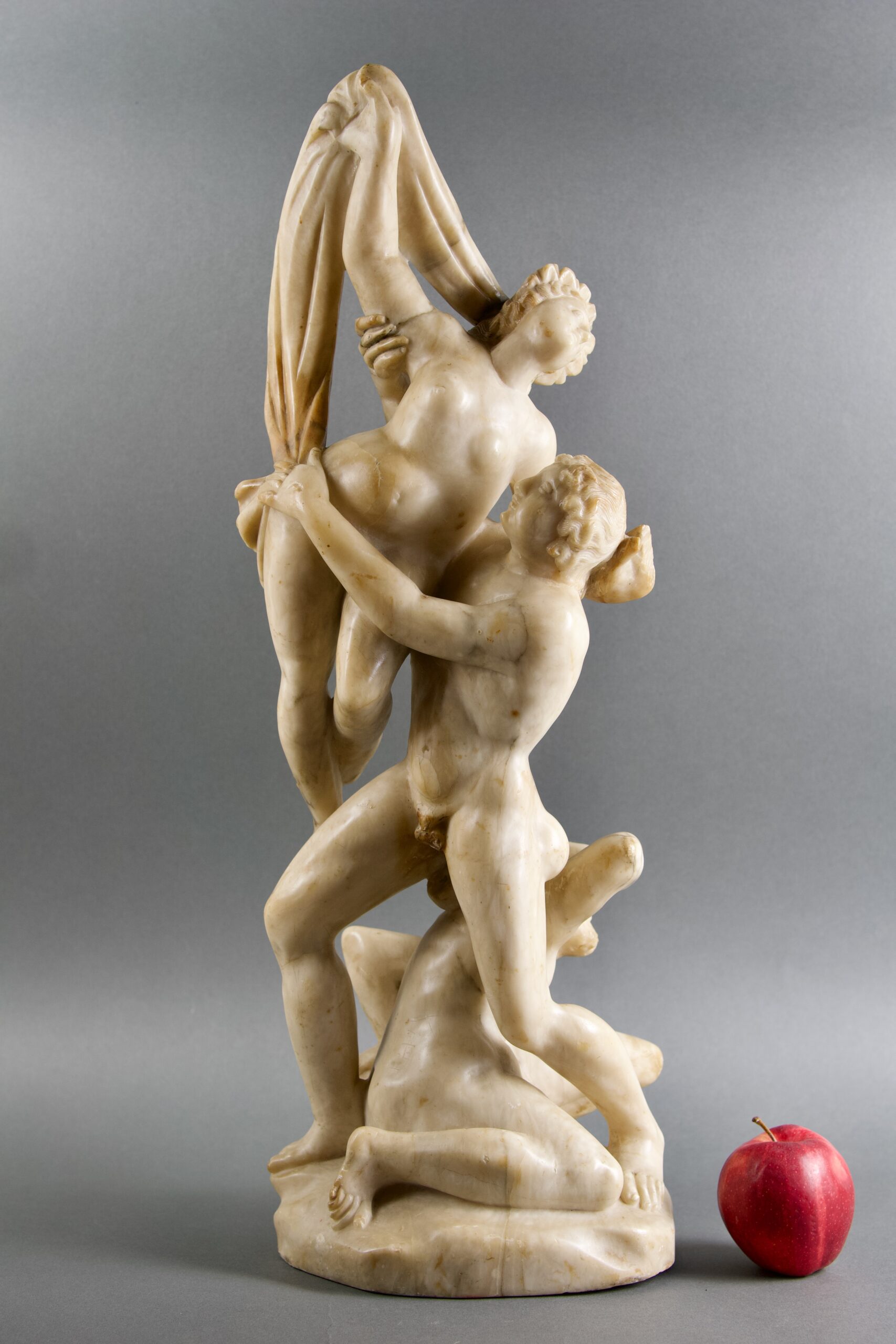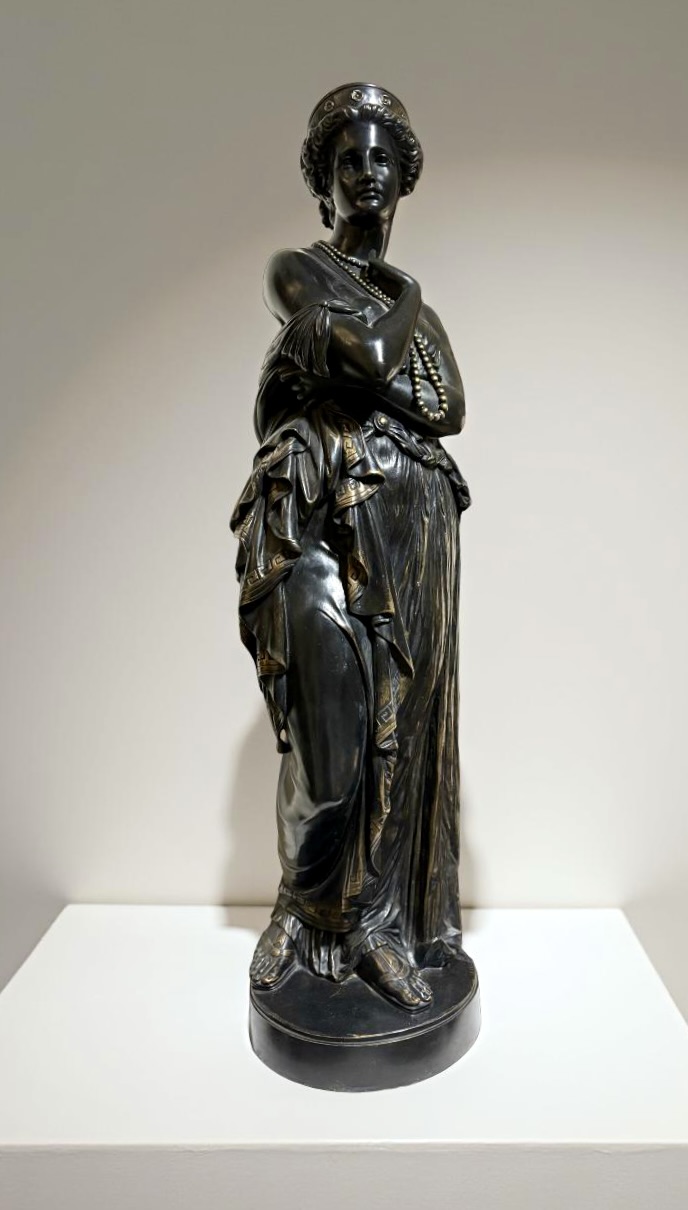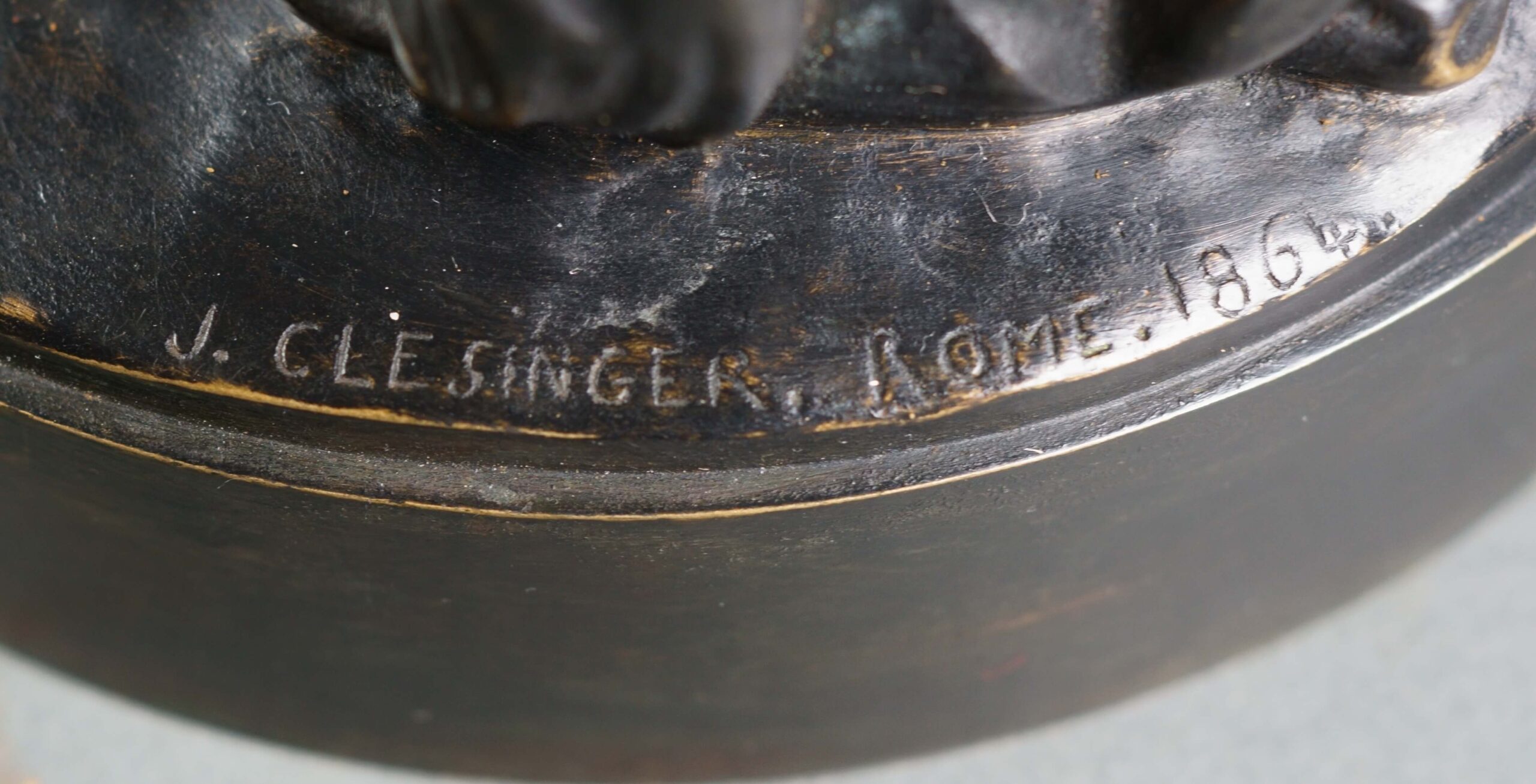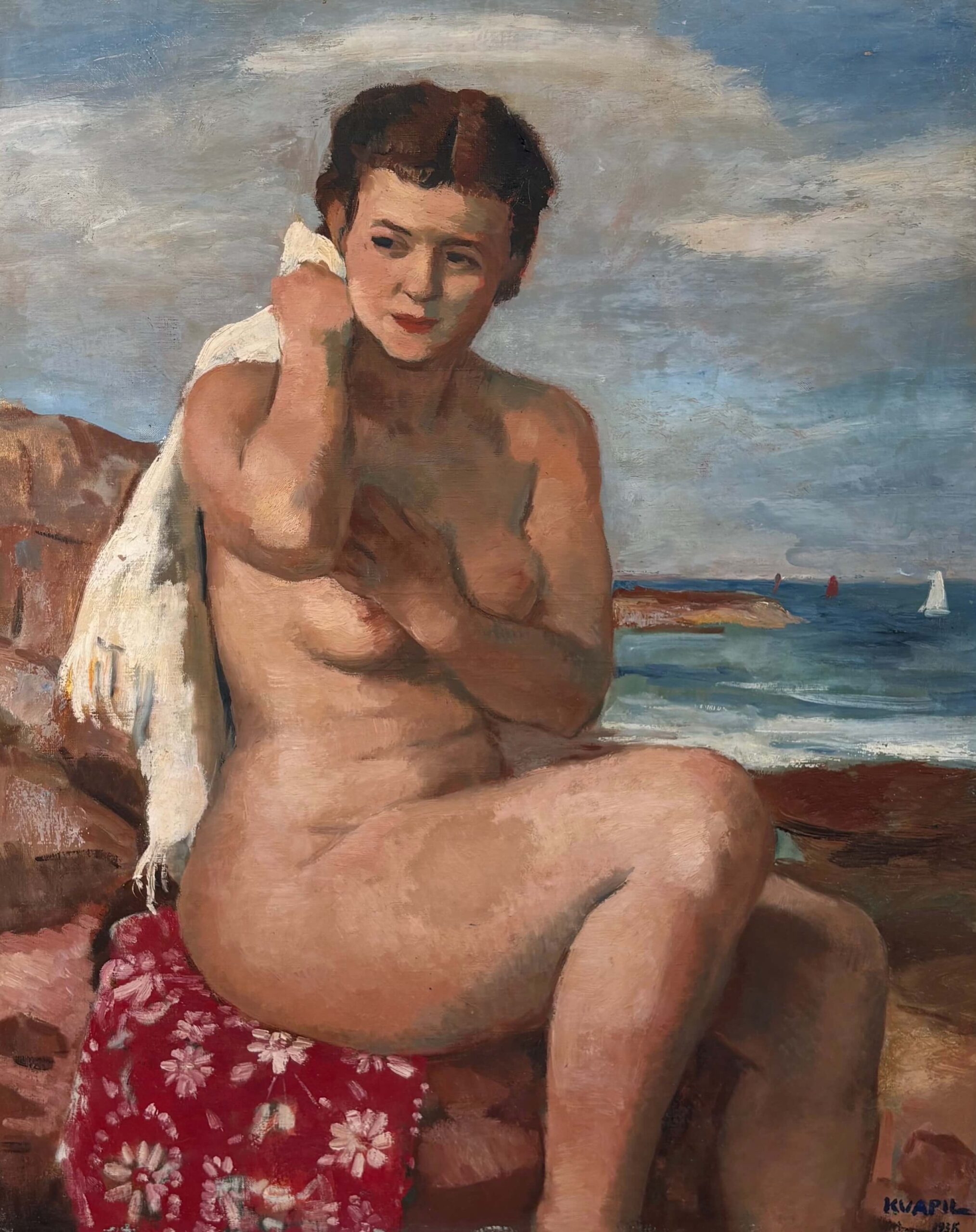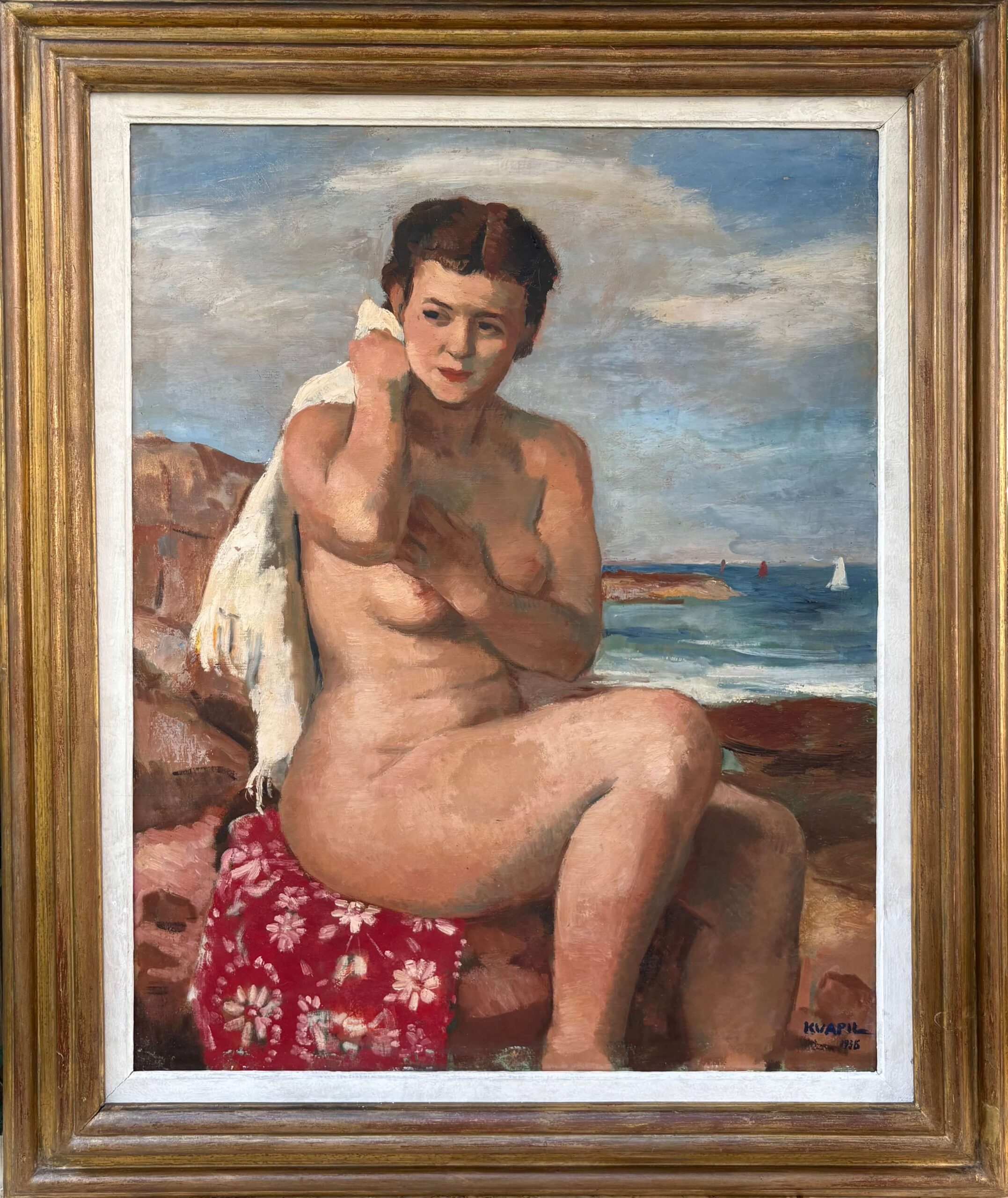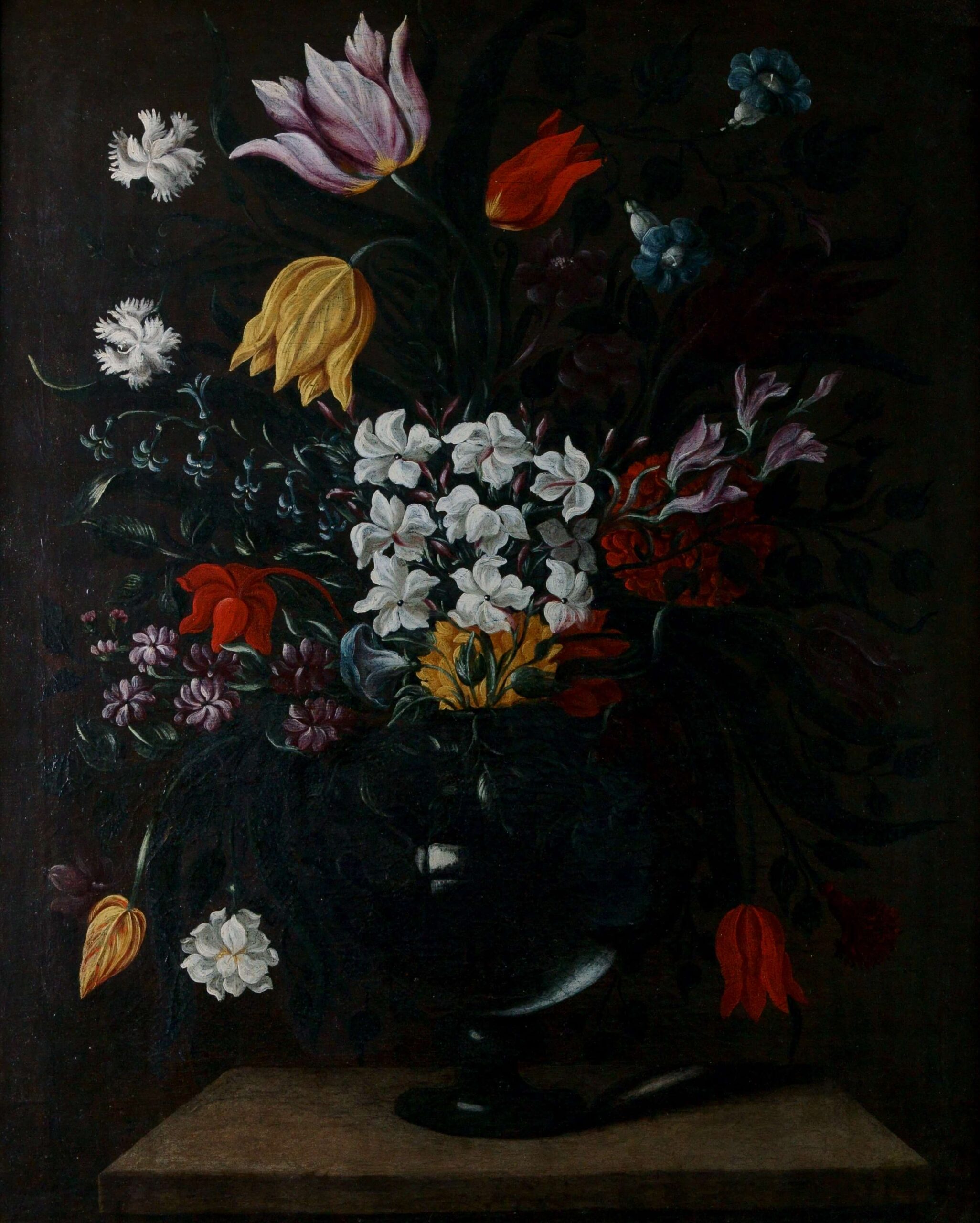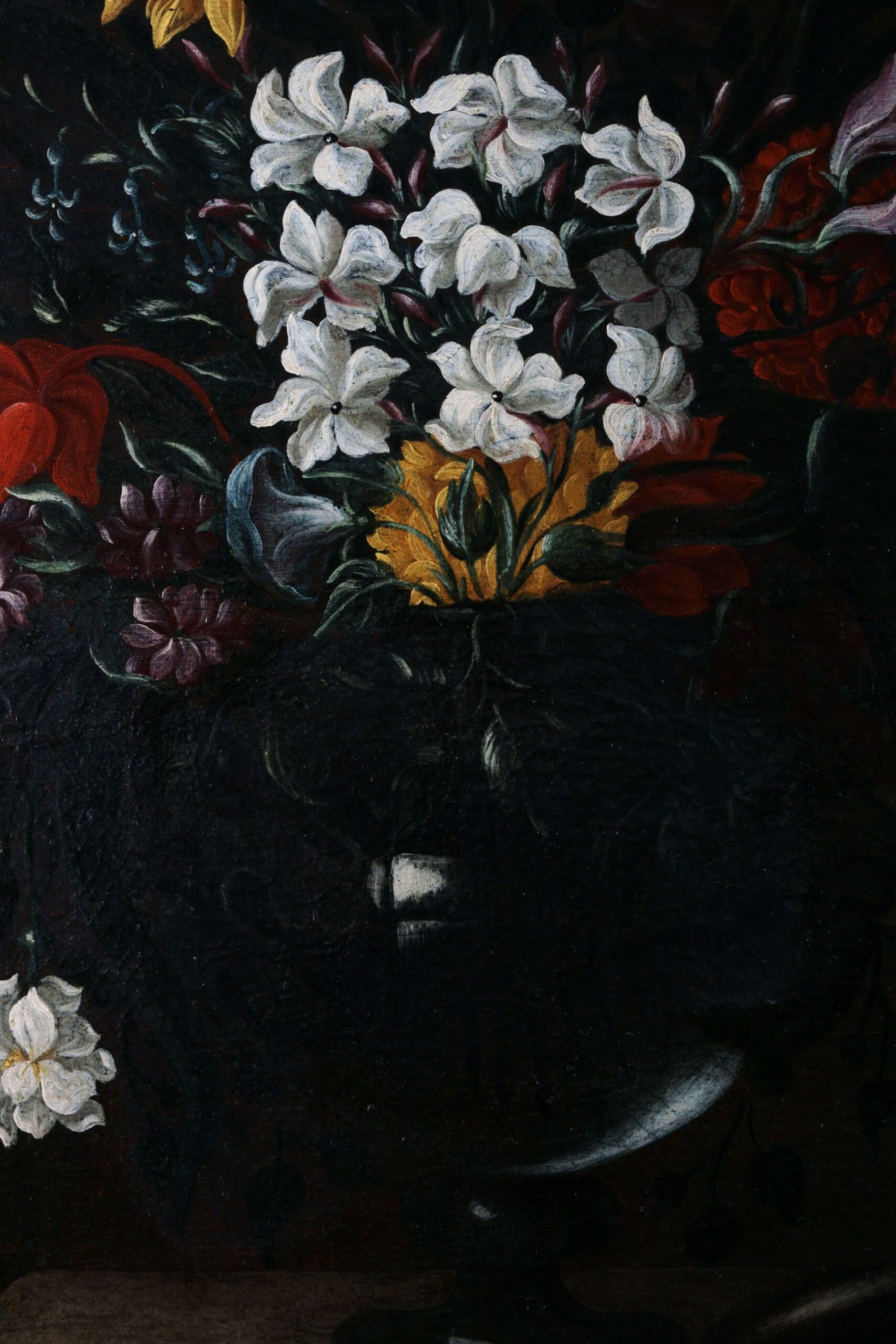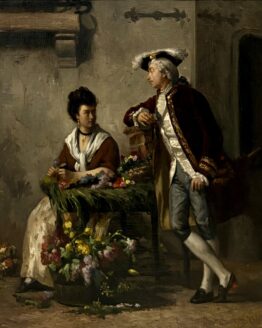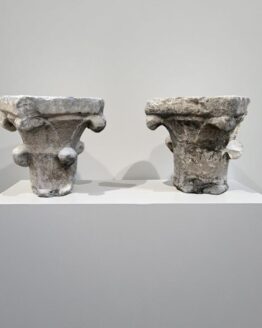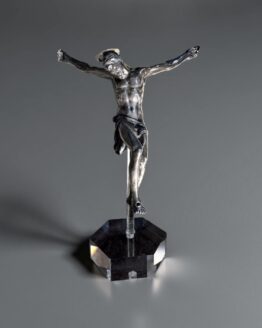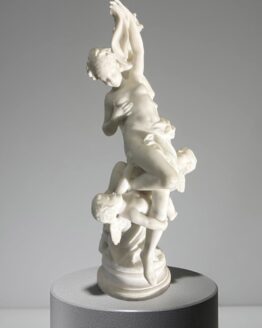“Portrait of a Little Girl” oil on wood signed and dated top left “A. Robert 1879” for Alexandre Robert.
A talented Belgian painter, after completing his studies in Paris and spending time in Rome, he became, from 1850 onwards, the portraitist in vogue among the Belgian aristocracy and bourgeoisie, after the Government commissioned him to paint the portrait of Baron Stassart. His exceptional pictorial and introspective ability left its mark on the portraiture of the time: his portraits are intensely realist, capturing the viewer with eyes that seem to come to life, faces that come to life. This exceptional portrait of a little girl from the wealthy bourgeoisie is a good example: her peach skin lights up in the dim light while her eyes and mouth open in a smile, in stark contrast to the pretty black fur hat she is wearing. The painting is framed in a magnificent gilded wooden frame from the same period.
Measurements
panel cm 48 x 39.5
frame cm 68 x 59.5
BIOGRAPHY
Nestor Alexandre Louis Robert (known as Alexandre Robert) (1817-1890)
Trazegnies – Brussels, Belgian School
The son of a notary, Alexandre Robert was destined to pursue a military career. However, he continued in his vocation: to be a painter. We know that from childhood his aptitude for drawing was noticeable; he sketched portraits of his classmates in notebooks. It was François-Joseph Navez (1787-1869), director of the Brussels Academy and a painter of the same origins as Alexandre Robert, who became his teacher.
The oldest known work of the painter dates back to 1838; it is the portrait of his father. Then, in 1841, he produced two large religious paintings, which can be seen today in the churches of Trazegnies and Courcelles: “The Martyrdom of Sainte-Barbe” which appeared at the Ghent Exhibition of 1841 and “Moses on the Mountain” exhibited at the Brussels Salon of 1842 at the same time as a “Resurrection of Jairus’ Daughter”.
Following these successes, Alexandre Robert committed himself to completing his studies in Paris. He left at the beginning of 1842, armed with the recommendation of his master who would ensure his admission to Paul Delaroche’s studio. But he regretted having been refused, because the studio was already full.
That is how he found himself sharing a room with Jean-François Portaels (1818-1895), admitted a few months earlier to the studio of Paul Delaroche (1797-1856), telling himself that he would benefit from the transfer of lessons through his fellow student. For his part, Alexandre Robert also devoted himself to the study of the Masters of the Louvre, admiring Raphael and Poussin, and the Spanish paintings that formed the Aguado de las Marismas gallery. This was until Jean-François Portaels decided to compete for the Prix de Rome and was declared the winner of this artistic tournament.
After this brief stay in Paris, he left the city to follow Jean-François Portaels to Rome. They visited Germany, the north and south of France, Switzerland and Italy.
Once settled in Rome, the correspondence with Navez and the Marquis de Trazegnies, shows us the uncertainty of Alexandre Robert in pursuing historical painting. However, he sent to the Brussels Salon of 1845 “the return of slavery”. It was also in Rome that he executed one of his masterpieces: “Lucas Signorelli Painting His Dead Son”, now preserved at the Royal Museum of Fine Arts in Brussels and which earned him a gold medal at the Salon of Brussels in 1848. He also painted “A Regret” in 1849 which was a great success at the Salon of Ghent.
Unfortunately, his stay was interrupted in 1849 due to the Garibaldi revolution. In 1850, the government commissioned him to paint the portrait of Baron de Stassart for the gallery of the presidents of the legislative chambers and he became the fashionable portraitist in the official world, among the aristocracy and the bourgeoisie. His portrait of M. Adolphe van Soust de Borckenfeldt was judged the best at the World Exhibition in Paris in 1855. It is said that a letter from Arthur Stevens to Robert speaks of the praise given to his portrait by Eugène Delacroix.
The “Charles Quint Before Death” exhibited at the Salon of 1854, initially for the Belgian government, was purchased by the Argentine government after its exhibition in Buenos Aires.
In 1860 he married Alice Madou, the eldest daughter of the illustrious painter Jean-Baptiste Madou.
Aspiring to teach, from 1864 he directed the drawing course based on ancient figures at the Academy of Brussels, then, from 1881, the painting course shared with Joseph Stallaert and Joseph Van Severdonck.
From 1870, following the death of Navez the previous year, he was charged with the direction of the Class of Fine Arts of the Academy. For the record, thanks to his position at the Academy, he was the instigator of the law of 26 March 1886 on copyright, which until then did not exist.
He was made a knight of the Order of Leopold in 1856 and an officer of the Order of Leopold in 1866, at the same time as Joseph Stevens (1816-1892) and Charles Verlat (1824-1890).
His portrait was painted by Félicien Rops for the Galerie d’Uylenspiegel in 1856. He is depicted in costume in front of a multitude of portraits. (copy in the British Museum, inv. no. 1896,0511.468.76.


